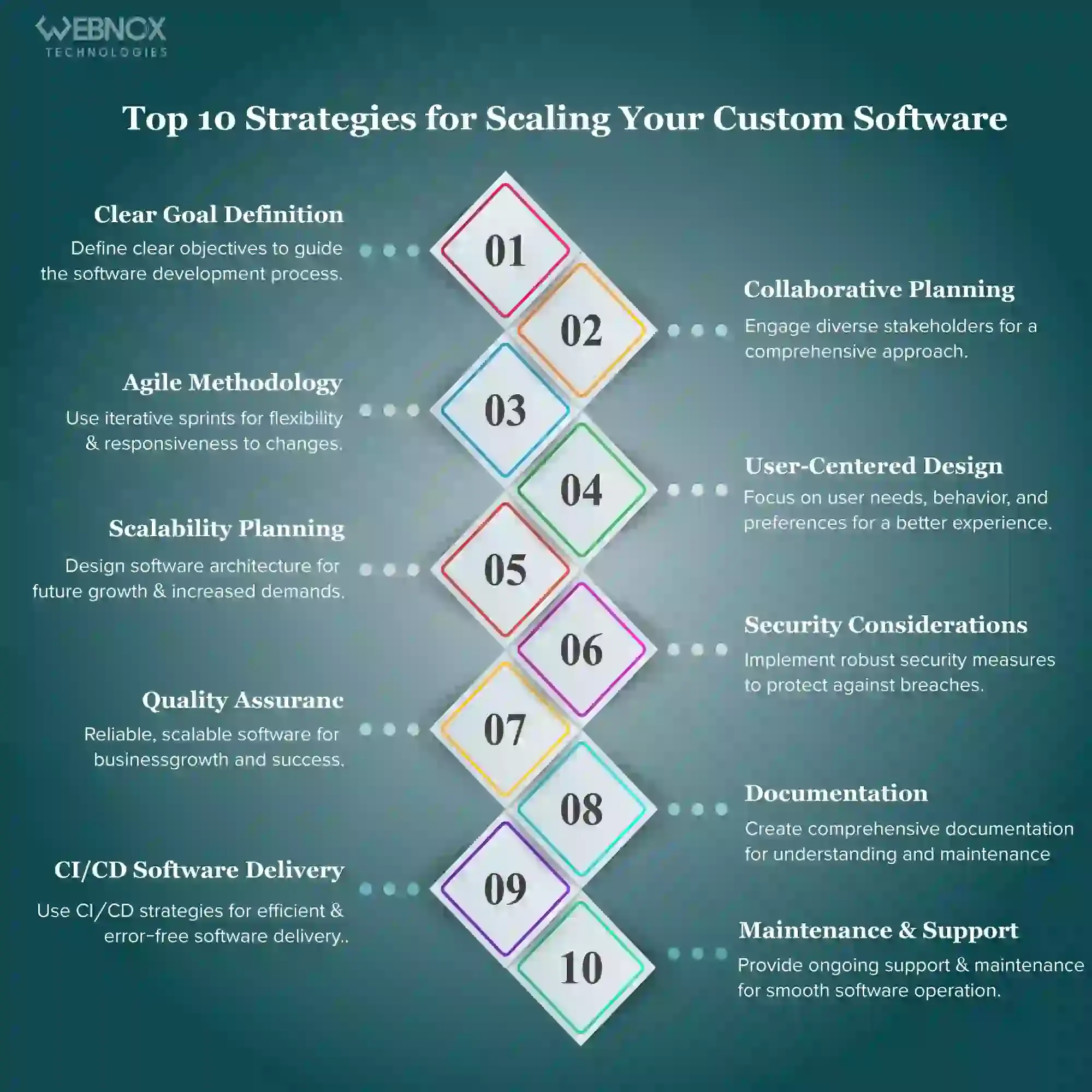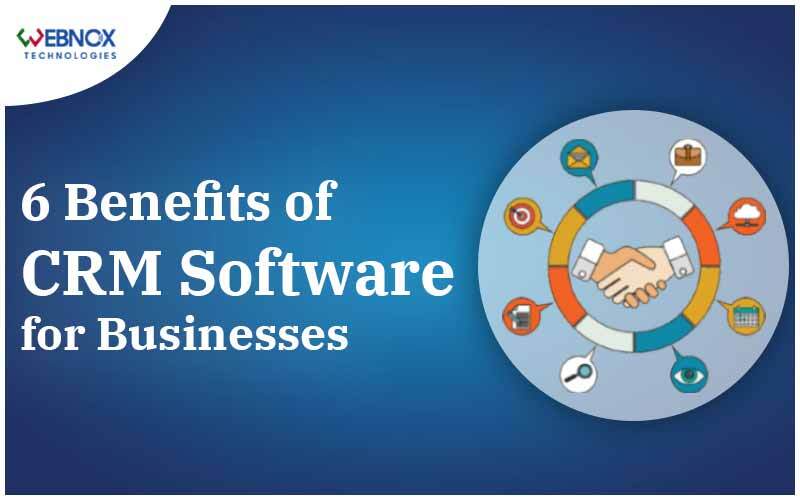10 Best Practices for Managing and Scaling Custom Software to Meet Your Business Needs

Abinaya // 17-10-2023
10 Best Practices for Managing and Scaling Custom Software to Meet Your Business Needs
In today’s rapidly evolving business landscape, having the right software can make all the difference. Custom software development has become a crucial strategy for companies aiming to stay competitive and meet their unique needs. However, managing and scaling custom software can be a challenging endeavor. In this comprehensive guide, we will explore the best practices that can help business owners navigate the world of custom software development, ensuring that it not only meets their immediate needs but also scales effectively for the future.
Understanding the Basics of Custom Software Development
Custom software development is a strategic process that involves creating software tailored to the specific needs of a business. Unlike off-the-shelf software, custom software is designed from the ground up to address the unique challenges and opportunities of an organization. It’s not just about writing code; it’s about aligning technology with business objectives. This custom approach allows companies to gain a competitive edge by optimizing their processes, enhancing customer experiences, and staying agile in a rapidly changing market.

Clear Goal Definition: The Foundation of Success
The success of any custom software project hinges on a clear goal definition. Without a well-defined purpose, it’s like embarking on a journey without a destination. To set the stage for success, businesses must conduct a thorough analysis of their needs and objectives. This process involves engaging key stakeholders, including executives, department heads, and end-users.
Once the goals are crystal clear, a custom software development company can serve as a guiding light throughout the development process. Every decision, from selecting features to prioritizing tasks, should be aligned with these goals. Moreover, well-defined objectives help in measuring the project’s success once the software is in use. Are internal processes more efficient? Are customers more satisfied? Are business objectives being met? These are the questions that clear goal definition answers.
Collaborative Planning: Involving Stakeholders from Day One
Custom software development is a team effort that involves not only developers but also stakeholders from various departments within the organization. This collaborative approach ensures that the software solution aligns with the needs and expectations of different teams.
Starting the planning phase with stakeholders from day one is crucial. It fosters a sense of ownership and ensures that all relevant perspectives are considered. IT teams can provide valuable input on technical requirements, while marketing teams can highlight customer-facing features that drive value.
Collaborative planning also helps in breaking down silos that can hinder the success of custom software projects. When departments work in isolation, the resulting software may not effectively address the organization’s holistic needs. By involving stakeholders early and regularly throughout the development process, you create a shared vision that contributes to the project’s success.
Agile Methodology: Flexibility in Action
In the fast-paced world of business, adaptability is a competitive advantage. This is where Agile methodology shines. It’s an approach that prioritizes flexibility, collaboration, and rapid iterations.
In Agile, the development process is divided into smaller increments called “sprints.” Each sprint typically lasts two to four weeks and results in a potentially shippable product increment. This iterative approach allows for adjustments and improvements throughout the project.
One of the key benefits of Agile is its responsiveness to change. If market conditions shift or new insights emerge during development, the Agile team can pivot accordingly. This ensures that the software being developed remains aligned with the organization’s evolving needs.
Moreover, Agile promotes collaboration between developers and stakeholders. Regular meetings, such as daily stand-ups and sprint reviews, keep everyone in the loop and provide opportunities for feedback. This collaborative approach fosters a sense of ownership and a shared commitment to the project’s success.
User-Centered Design: Putting Users First
At the heart of custom software development is the user. User-centered design is an approach that places the needs and preferences of end-users at the forefront of the development process.
This approach involves conducting user research to gain insights into user behavior, preferences, and pain points. It’s about understanding who the users are, what they need, and how they interact with the software.
User-centered design also includes usability testing and prototyping. Usability testing involves observing users as they interact with the software and collecting feedback. Prototyping allows for the creation of interactive mock-ups to test and refine user interfaces.
By putting users first, custom software can be designed to be intuitive, efficient, and user-friendly. It reduces the risk of developing software that doesn’t meet users’ needs and ensures a positive user experience.
Scalability Planning: Preparing for Growth
In a dynamic business environment, growth is often the goal. Scalability planning involves designing the software architecture in a way that allows it to grow with your business.
Scalability planning is about future-proofing your investment. It ensures that your custom software can handle increased loads, additional features, and more users without major disruptions.
This involves careful consideration of the software’s architecture, database design, and infrastructure. Scalable software is designed to efficiently use resources, ensuring optimal performance even as demand grows.
By planning for scalability from the beginning, you can avoid costly and disruptive rearchitecting later on. This long-term perspective ensures that your custom software remains an asset that supports your business’s growth.
Security Considerations: Protecting Your Investment
In an era of data breaches and cyberattacks, security is a top concern for custom software development. Security measures must be integrated into the software’s design and continuously updated to stay ahead of threats.
Security considerations include implementing encryption to protect sensitive data, access controls to restrict unauthorized access, and regular security audits to identify vulnerabilities.
A data breach can have severe consequences, including financial losses and damage to your reputation. Therefore, investing in robust security measures is not optional; it’s a necessity.
Security should be a continuous process, with updates and patches applied regularly to address newly discovered vulnerabilities. Protecting your investment means safeguarding your data and ensuring the trust of your customers.
Quality Assurance: Ensuring Reliability and Performance
A critical aspect of successful custom software development is the integration of robust software quality assurance practices. Quality assurance encompasses a series of systematic processes and methodologies aimed at ensuring that the software meets predefined standards of reliability, functionality, and performance.
It involves rigorous testing procedures at various stages of development, including functional testing to verify that the software meets specified requirements, performance testing to assess its responsiveness under varying conditions, and compatibility testing across different platforms and devices.
Additionally, user acceptance testing is vital to guarantee that the software aligns with user expectations and needs. Robust quality assurance measures not only identify and rectify potential issues early in the development cycle but also instil confidence in the software’s reliability and overall quality, ultimately contributing to its success in the market.
Documentation: The Unsung Hero
Documentation often gets overlooked but is a critical part of managing custom software. Comprehensive documentation ensures that anyone can understand and work on the software, even if the original developers are no longer available.
Documentation includes technical specifications that outline how the software works, user guides that help end-users navigate the software, and maintenance manuals that guide ongoing support and updates.
Well-documented code is easier to maintain and extend, reducing the long-term costs of custom software ownership. It also facilitates knowledge transfer within the organization, ensuring that the software remains an asset rather than a liability.
Documentation is an investment in the long-term sustainability of your software. It’s a resource that keeps on giving, supporting the software’s health and vitality.
Optimizing Software Delivery: CI/CD Strategies
In the realm of custom software development, the adoption of Continuous Integration and Continuous Deployment (CI/CD) strategies stands as a crucial aspect for ensuring efficient and error-free software delivery.
CI/CD practices involve automating the integration of code changes into a shared repository multiple times a day, allowing developers to regularly merge their code changes. Continuous Integration ensures that all code changes are tested and verified, reducing integration issues and conflicts.
Continuous Deployment, on the other hand, automates the deployment of code changes to production or staging environments after passing through the CI process. It streamlines the release process, enabling quick and reliable delivery of new features and updates to end-users.
The adoption of CI/CD methodologies enhances development speed, decreases the time taken to identify and rectify issues, and significantly minimizes the risk of errors in the production environment. This strategy not only accelerates time-to-market but also fosters a more reliable and stable software product.
Maintenance and Support: Keeping Your Software Healthy
Once your custom software is in use, it’s not the end of the road. Regular maintenance and support are essential to address issues, implement updates, and keep the software running smoothly.
Software, like any other asset, requires ongoing care. Maintenance involves fixing bugs that may emerge after the software is deployed, updating libraries and frameworks to ensure compatibility and security, and making enhancements based on user feedback.
Support means being responsive to user inquiries and issues. It’s about providing a safety net to ensure that your software remains reliable and effective.
By investing in maintenance and support, you ensure that your custom software continues to provide value over time. It’s a proactive approach that prevents costly downtime and disruptions.
In conclusion, managing and scaling custom software development is a complex but rewarding endeavor. By following these best practices, you can ensure that your custom software not only meets your immediate needs but also evolves to support your business’s growth and success.
Custom software development is an investment in your company’s future. It empowers you to innovate, adapt, and stay ahead of the competition. When done right, custom software becomes a strategic asset that can propel your business to new heights.
Now, equipped with a comprehensive understanding of these best practices, you can begin your software journey tailored to your business with confidence. Remember that custom software is not just a tool; it’s a strategic enabler of your business goals. Embrace these practices, and your software will be a valuable asset for years to come.




